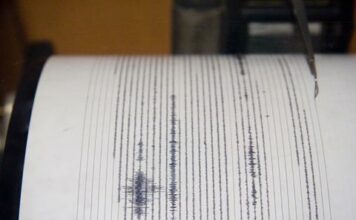Think Hawaii and images of romance, blue skies and glorious weather float by the conjured thoughts. Midway across the warm Pacific lies a chain of islands called Hawaii, 2,000 miles of ocean from our mainland with no continental coast between. These small bits of land appear offered to the sky by water and pressed to the earth by stars. Here civilizations of Occident and Orient merge under the tropical influence of the Polynesian culture.
Moonlight follows a path from the beach at Ka’anapali with time for a dive at Molokini, enjoying the smell of eucalyptus while passing through Makawao’s ranch country. A stunning 20-foot-long whale suddenly broaches off of Kihei. Ride a horse in the Haleakala Crater and explore the historical Hana coast. These are treasures to remember and dream about. This is Maui, the island the natives call “no ka oi.”
Isle of many facets
Maui, the most spiritual and magical of the islands, has so many areas to discover, a minimum of a week should be set aside to explore the highlights of this fascinating Eden.
The legend of Maui
The volcanic island of Maui rises from the spewing of the volcano Mauna Loa. Named for the mischievous demigod who, according to legend, used his fish hook and cunning to pull up the ocean bed to form the islands and who crippled the sun so it would move slower and the natives could have more daylight to enjoy their already idyllic lives.
Remarkable history
About 10 miles south of Ka’anapali, the historical whaling town of Lahaina with cobblestone streets calls out to tell her remarkable history. Stop at the Baldwin home on Front and Dickerson streets for a remarkable taste of that history. Walk Lahaina’s Front Street and enjoy colorful shops and historical sites. Try and be by the Banyon Tree for a great sunset experience.
A beautiful experience
The Road to Hana is 52 miles of historical beauty and adventure. Its winding road includes 617 curves and 56 bridges. The natives will zip by, but Hana Road should be savored. It is edged by ferns, scampered across by small animals and splattered by falling mangos; it twists in and out of deep gorges on the East Maui coast. It passes beneath waterfalls and crosses streams on old concert bridges. It follows the coastline, shadowed by a green jungle canopy with views of the blue Pacific spread out below. It passes fields where King Kamehameha threw his first spear in battle. It passes the Seven Pools and coconut groves. Then the road leaves Kiphulu for Kaupo, where once stood the weathered store of Nick Soon, the old man who introduced electricity and the automobile to this coast.
Go at least as far as Hana; the beauty of the drive and the history of the town and the people will fascinate and delight. If your are adventurous, ask for directions 10 miles down the road to the Seven Pools and the tiny Palapala Ho’omau Congregational Church, which sits on a bluff over the sea where you will find a small cemetery facing the ocean. Here you will find the grave of Charles Lindbergh.
Nature at her best
If you time your visit to Maui between November and April, you will be treated to one of the most exciting attractions the island has to offer. Whale-watching is a legendary part of the area and if you are fortunate enough to see whales breaching and blowing just off shore, you will experience nature at her ultimate. Up close and personal, whale-watching excursions depart from Lahaina and Ma’alaca every day during the season. These splendid, endangered giants come to mate and birth in the warm Hawaiian waters.
The best beaches
The 700-plus square miles of Maui includes Haleakala, a 10,023-foot dormant volcano that challenges bikers to ride down her side in a glorious rush of excitement and glee. The second largest island in the Hawaiian chain lures more than 3 million travelers annually. There are beautiful beaches offering water sports and a front seat for whale watching. In some areas, the culture holds to the past. But 21st century technology envelopes other parts of the island for those who need to be on the fast track.
‘The Valley Isle’
The island is made up of two volcanoes, Pu’u Kakui (5,788 feet) and the enormous (and to the Hawaiians holy) Haleakala (10,023 feet). One is extinct and one dormant, but both erupted millenniums ago and formed one island creating a valley between the two—thus Maui is known as “The Valley Isle.”
For more information, call the Maui Visitors Bureau at (800) 525-MAUI.
Camille Bounds is a theater and travel columnist for the Morgan Hill Times and Gilroy Dispatch. She lives in Morgan Hill and can be reached at bo******@********ic.net.














